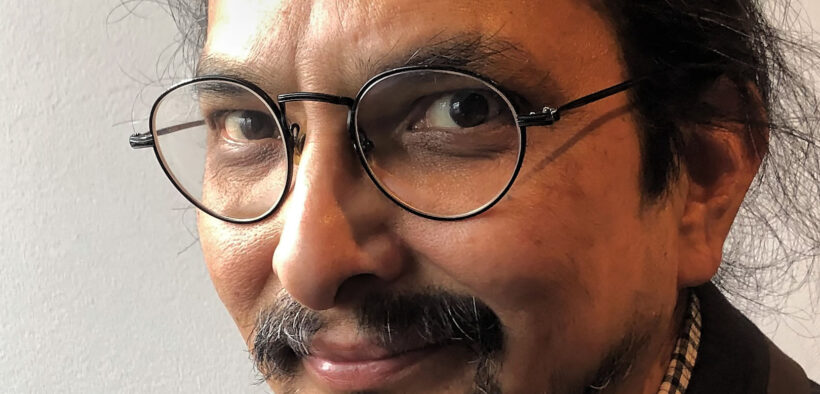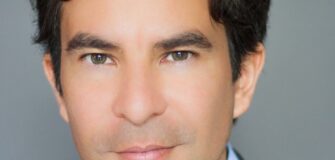COVID-19 Strategy From Indigenous Memory of Pandemics

As an Indigenous person who spends his days reflecting on law and policy and history, the death toll imposed by the mathematical logic of pandemic is, sadly, my bread and butter. My communities have seen this before. My people have been literally decimated – reduced in population by a decimal place – so I have some sense of the actual, real, brutal and unthinkable future before us. Canadians do not need to endure decimation, but we, all of us, do need to realize that to avoid that future and to remain as residents of this planet, we need to act now. Nations – people – can die out when previously unthinkable futures are realized. But we survive when we act in clear, decisive and coordinated ways.
With COVID-19, the end goal is clear: how do we as Canadians contain the virus until there is a vaccine, and how do we continue to have the labour force and industry required to keep the rest of the country fed and watered, with the lights on until that vaccine arrives (and beyond)? I say ‘beyond’ because there is a sense that if we get to the vaccine, we have won. But that is a fallacy. Even with a vaccine, the global community will have to produce 7 billion doses, and then we will need to distribute those billions of doses in an orderly fashion. Meanwhile, South Korea and other leading countries are finding persons reinfected with COVID-19 – so even with a vaccine we may well still require an aggressive means of dealing with infection flare-ups.
My purpose here, in this first post of my Geo-Blog with GB, is twofold: first, argue for the kind of government coordination that is not my people’s experience of government crisis response; and second, to say a little bit about how my people understand the nature of the problem before us.
To begin combatting COVID-19 we need to do four things:
First, we must be able to marshal resources. The Emergencies Act is a fearsome and daunting federal statute. But the Act provides the only possibility for centralized planning and delivery of the kinds of goods and resources we require to combat local, regional, national and international crises. To date, there has been public discussion of whether the Act is necessary to create sufficient supplies of masks, gowns and shields. Beyond manufacturing the supplies to support hospitals, there must be interventions to support and maintain the food supply and its workers, the electrical grid and its workers – and multiple other vital systems and their workers – without which everything else comes crashing down.
Second, we must massively ramp up testing. Until we can know who has the virus and who does not, we are blind, flying the plane without instruments. Ramping up testing must be a top priority.
Third, we must begin training an army of persons in the art and science of contact tracing. Once we know who has the virus, we need to be able to locate everyone who might have been infected by that person. And we need to find those people and quarantine them.
Fourth, quarantine. Chinese authorities detained anyone who tested positive. Children were taken from their parents, and siblings separated. No one was sent home and the argument was, “Why send anyone home to infect their roommates or family members, who must then head out to buy groceries for their COVID-19 positive daughter or roommate or lover?” Or worse, to die at home alone. To enable this, Chinese authorities built or modified facilities to house the quarantined. Canadians may not submit to immediate seizures of themselves or loved ones, but I think we should at least be given the option of government quarantine – and for this, facilities must be built. It may also become clear that voluntary measures are not enough – that is, that quarantine is medically necessary, in the same way that today, once you admit your loved to the emergency room, there are no visitations.
Quarantine of this scale will require specialized facilities so that we can safely and humanely quarantine anyone who tests positive for COVID-19.
But those are the steps: enable coordinated federal action; test, trace, and quarantine. Without these measures, returning to what we once called ‘normal’ is fantasy.
I can imagine a scenario where, with mass testing and social distancing, we are able to lower the number of new infections to just 50 or 60 persons a day countrywide. However, we can only do that through rigorous social distancing, masks as the new normal, contact tracing, and a proper system of quarantine for the newly infected.
Unfortunately, today, I see very little coordinated long- or medium-term planning. I see the federal and provincial governments asserting overlapping jurisdiction even during this time of crisis, the provinces opposed to the federal government invocation of the Emergencies Act to allow the coordination of supplies, production, standards and personnel. Indeed, it is the same kind of jurisdictional infighting that helps to explain why Indigenous communities have boil water advisories in Canada: health and social services are provincial responsibilities, but ‘Indians’ are a federal responsibility. Everyone stands with hands in the air hoping that someone else solves this problem.
Today, I see very little coordinated long- or medium-term planning. Indeed, it is the same kind of jurisdictional infighting that helps to explain why Indigenous communities have boil water advisories in Canada: health and social services are provincial responsibilities, but ‘Indians’ are a federal responsibility. Everyone stands with hands in the air hoping that someone else solves this problem.
As an Indigenous Canadian, I speak with the history of persons who have endured pandemic. We have seen our worlds change in unthinkable ways. The new normal is something that my people, generationally, deal with on a regular basis. Before residential school, my mother was raised on our family’s trapline – spending day after day moving from trap to trap, skinning the animals trapped for fur, eating the flesh, and selling the fur pelts so that my grandparents could feed and clothe my mother, her brothers and sisters. A single generation later, I earned a graduate degree in law from an Ivy league school, and I write this intervention from my home office via the miracle of the Internet. We Indigenous people know change; we know mass and unthinkable change. My family does not just see a pandemic: we see a planet pushed to the brink and acting to make this a liveable planet – not for us human beings – but rather for the four-legged ones, the trees and plants, the winged and insect beings, and the fish and water beings. These beings have been defenceless against us. And yet now it looks like the Earth herself is acting on behalf of the living, but non-human world, in order to save this shared ecosystem from us, the human beings that forgot that the environment is not external to us; forgot that we are part of an interconnected set of systems that preserves and gives us life.
We Indigenous people know change; we know mass and unthinkable change. My family does not just see a pandemic: we see a planet pushed to the brink and acting to make this a liveable planet – not for us human beings – but rather for the four-legged ones, the trees and plants, the winged and insect beings, and the fish and water beings.
So, my advice, stay home. Look up at night and notice that the stars are visibly brighter, and during the day the birds sing as loudly as before – but now you can hear them over traffic. This world, this planet, its soil and water and resources, these things were not made for us as a species: this planet is our shared inheritance – not just the humans, but all living beings. And we humans have pushed this ecosystem to the very edge and maybe even a bit past that. Sometimes it seems that we did all of that just so that we could buy two t-shirts for $7. But the Earth is fighting back. Global warming takes down with it everything: ecosystems collapse, weather patterns become unsurvivable, oceans flood lands they have not seen in 700,000 years. But this is different. COVID-19 is targeted. It is us, and nothing else. The birds, the bees, the fish, the trees: none of them care about out the pandemic.
Driving around the other day – the first time in weeks – and looking out at the groups of jogging teenagers, and the buskers and the crowds, I had to wonder: Do we have what it takes to save ourselves – even just ourselves?
I want to believe that across the globe we can show Mother Earth that we hear her. Stay inside. Reuse things. Stop thinking that you are important: you are not, and never were. All that matters is us, as a collective, all together in this now, working hard to show this planet and each other that we humans are worth saving, and maybe even that in receiving a teaching direct from Mother Earth, humanity is also learning.



